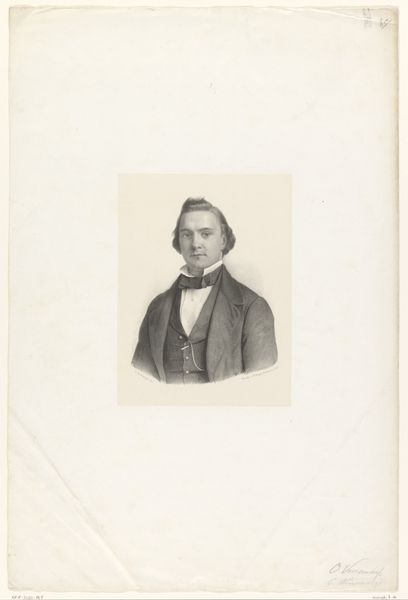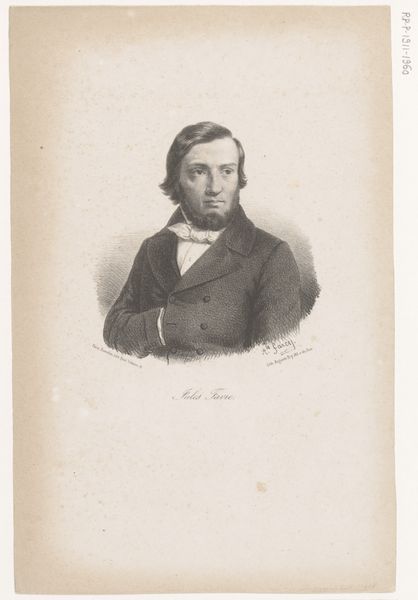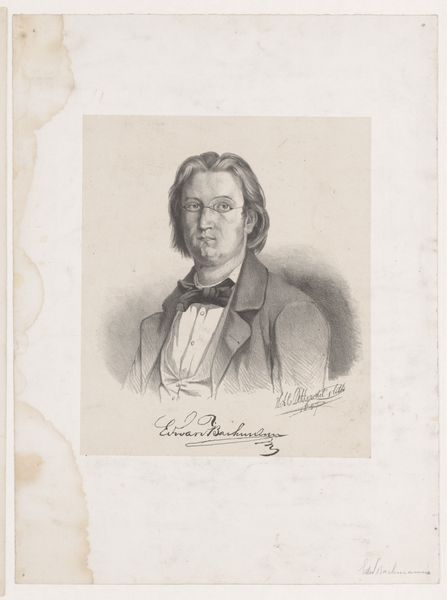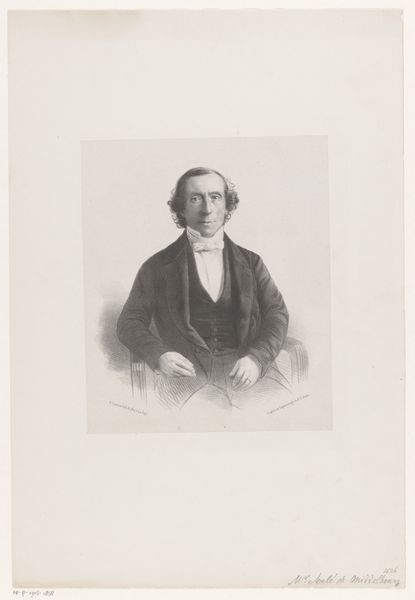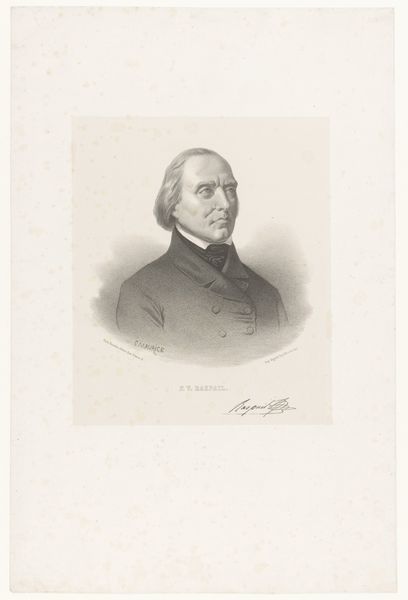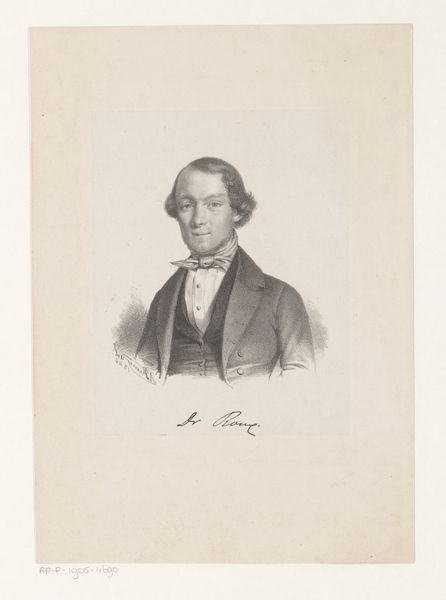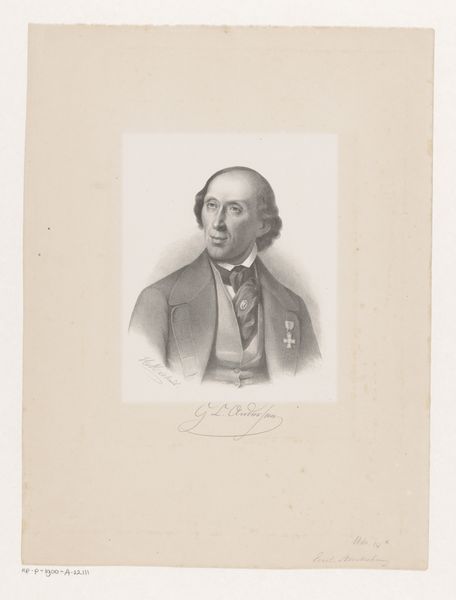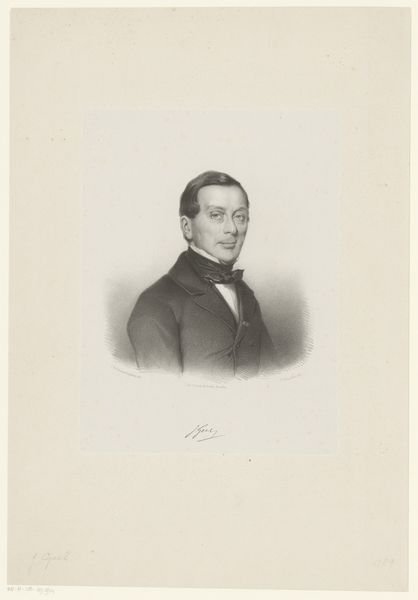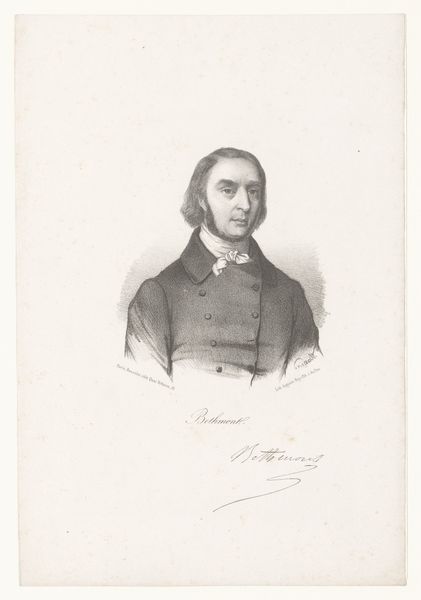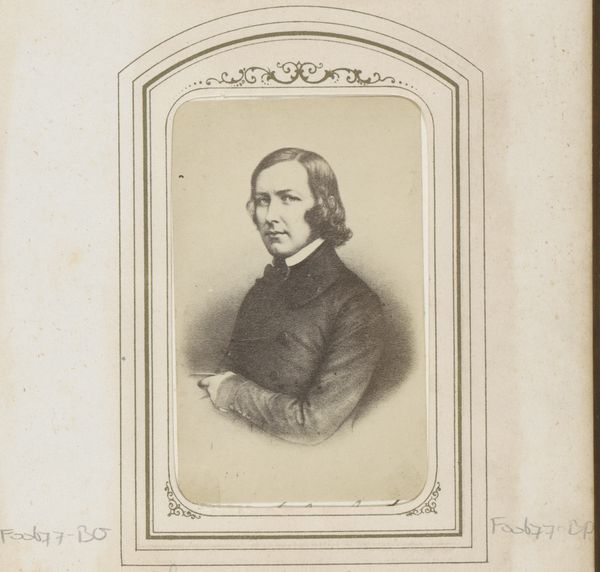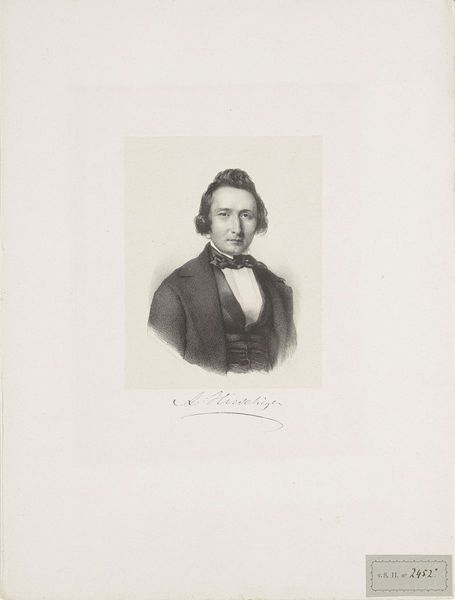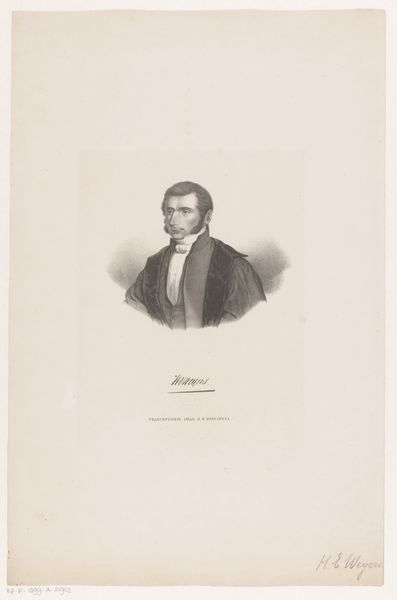
print, engraving
#
portrait
#
16_19th-century
# print
#
pencil drawing
#
romanticism
#
portrait drawing
#
engraving
Dimensions: height 359 mm, width 270 mm
Copyright: Rijks Museum: Open Domain
Curator: This is a print, specifically an engraving, entitled "Portret van Johannes Verhulst." It was created sometime between 1840 and 1843. Editor: It’s rather somber, isn't it? The tight lines create a very controlled feeling. The lighting, primarily focused on the face, draws you in despite the somewhat stark presentation. Curator: Indeed. Verhulst was a prominent Dutch composer and conductor. As such, his image, like that of other notable figures, was carefully circulated to cultivate his reputation and standing in the cultural sphere. Prints allowed for wider distribution than painted portraits. Editor: I see your point about circulation. Look at the delicate hatching used to sculpt his features and suggest light; it must have been immensely time-consuming. And that tiny ribbon or medal…such a detail. It pulls the eye. Curator: Precisely. This attention to detail serves a social purpose. Details like that medal elevated Verhulst's perceived status, reinforcing his authority. Notice too the fashion of his clothing - it communicates respectability, catering to a bourgeois audience. Editor: Still, beyond its social function, the meticulous line work also communicates the Romantic sensibilities of the era. Look how it infuses a kind of idealized yet human representation. The artist, Franciscus Bernardus Waanders, really captures the sensitivity of the sitter. Curator: Romanticism served its own purposes, of course. Individualism was in vogue. The rise of nationalism saw individuals, like Verhulst, becoming symbols of cultural identity. This print plays directly into that trend. Editor: Perhaps. Regardless, I'm struck by how effectively Waanders employed light and shadow to achieve that end. It brings a three-dimensionality to a two-dimensional plane that's remarkable. Curator: I'm drawn to the strategic choices that frame public perception. Editor: And I to the skillful rendering of the subject in its most flattering and representative light. Curator: A testament to the era's ambitions, then. Editor: Exactly, both artistically and socially.
Comments
No comments
Be the first to comment and join the conversation on the ultimate creative platform.
